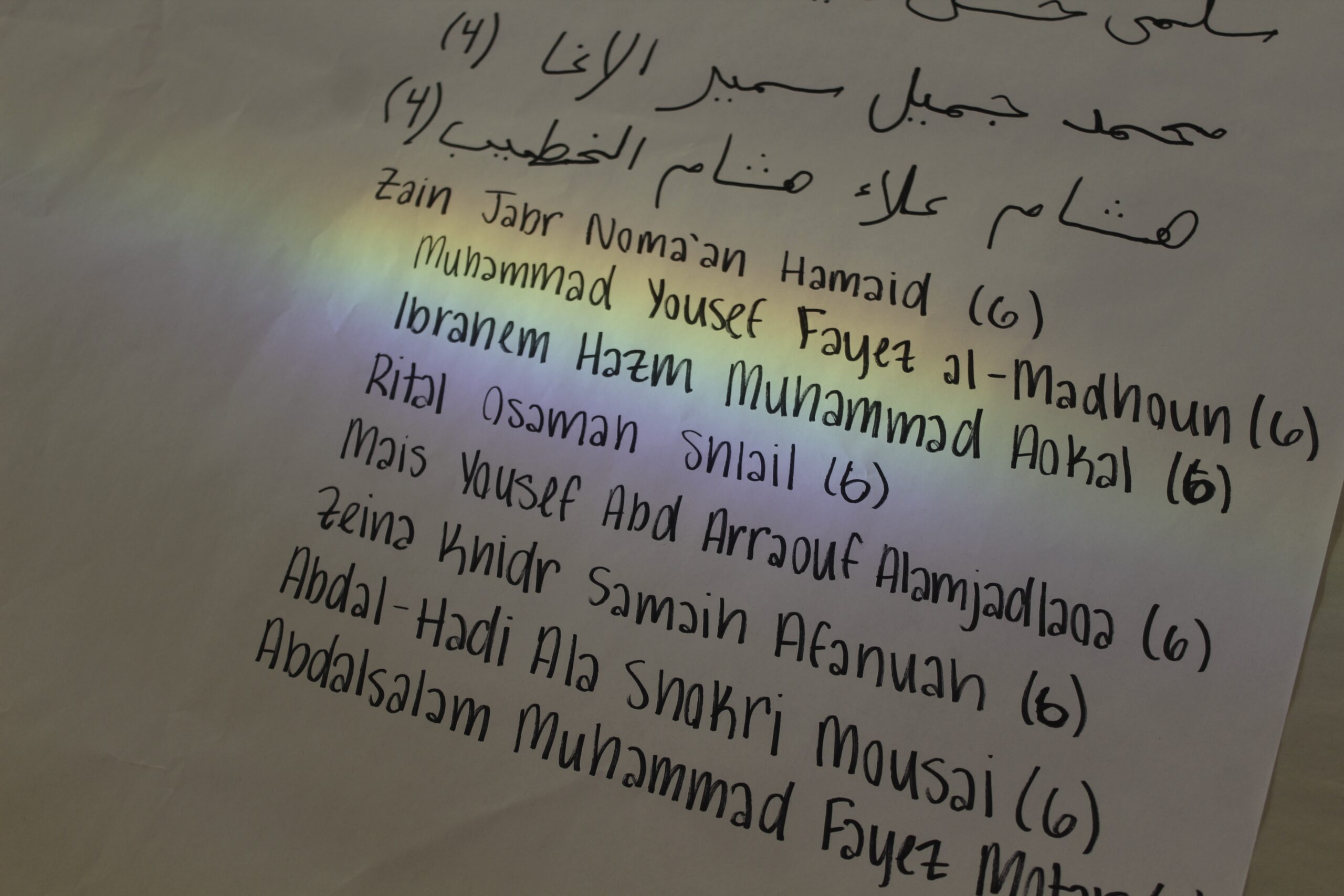SJP brings back name-writing display as Palestinian deaths mount
October 18, 2024
 Carolina Weatherall
Carolina WeatherallLast Thursday, October 10, Bowdoin Students for Justice in Palestine (SJP) started work on a name-writing display in Smith Union’s Lamarche Gallery that exhibits the names of the more than 34,000 Palestinians that have been killed by Israel’s invasion of Gaza in the past year.
The event is similar to the one organized by SJP last November, when over 150 students and faculty members gathered to record the names of 6,700 killed Palestinians on banners that lined Morrell Lounge’s walls.
This semester, SJP compiled a 900-page list of names, provided by the Gazan Health Ministry, for students to write on sheets of paper to be hung on the gallery walls. Students can contribute to the display every day until October 20.
One of Bowdoin SJP’s leaders, Olivia Kenney ’25, described how the event has changed from last year.
“Quite simply, there are many, many more names. I think last year there was between 6,000–7,000 [names], and this year, there’s about 34,000,” Kenney said.
She also noted the change in the permitted location for the display.
“Last year, the College allowed [us] to hold the event in the main section of Smith. This year, [the College] only allowed us to use the [Lamarche Gallery],” Kenney said.
Despite this location change, students have consistently shown up to participate in the name-writing. Aiman Limbada ’28 wrote roughly ten pages worth of names and has visited the event almost every day for at least an hour or two.
Elana Sheinkopf ’25, on her second visit to the gallery room, worked on writing a second page of names. She plans to make subsequent visits later throughout the week.
“It’s really powerful to just sit with the names and the sheer number. [Writing the names] is just a little bit of what we can do,” Sheinkopf said. “It’s also partly to stand up for Palestinians in whatever way and what that means to me and my own Jewish identity, which I think has been taken over by a select few voices in the media right now.”
Regine Pierre-Louis ’25, another Bowdoin SJP leader, said that listing the names on the walls of the gallery also serves as a visual reminder of the lives lost.
“It’s hard to conceptualize 33,000 people who are just gone. Part of [setting this visual] is to help people understand the gravity of [such large numbers],” Pierre-Louis said. “We want to memorialize these people … [and show] that these lives aren’t just part of a statistic. They’re also individual people who had names, and oftentimes, didn’t get to live out a full life. Many of the names on the wall don’t even go past the age of six.”
Both Kenney and Pierre-Louis hope that this idea of commemoration raises awareness about what is happening in Gaza and encourages students to take action. Kenney encouraged students to get involved with political action on campus, like last spring’s “Bowdoin Solidarity Referendum,” as well as in nationwide activism.
“I want to bring to attention the specific ways that [students] can get involved in the communities we inhabit, including voting [in the referendum],” Kenney said. “This is just one way we can contribute to broader political activism in the United States.”
“As students, we have some degree of power, and gaining a better understanding of what we can do [is important],” Pierre-Louis added.
Since last year, Kenney said, SJP has grown both in student involvement and in its ability to organize events. Kenney believes the organization has done an effective job in conveying its message to both students and the Bowdoin administration, despite being relatively new on campus.
The names now fill almost the entirety of the Lamarche Gallery, and the list continues to grow. SJP intends to sustain its efforts this year to raise awareness for Palestine and encourage student involvement.
“It’s really important to keep what is happening at the forefront of our minds,” Pierre-Louis said.
Editor’s Note on October 18 at 3:30 p.m.: An earlier version of this article included an incomplete and possibly misleading quote. While the intention of the interviewee was to encourage students to participate in political action on campus, such as by voting in the “Bowdoin Solidarity Referendum,” the original article misconstrued this as a call to vote more generally.

Comments
Before submitting a comment, please review our comment policy. Some key points from the policy: